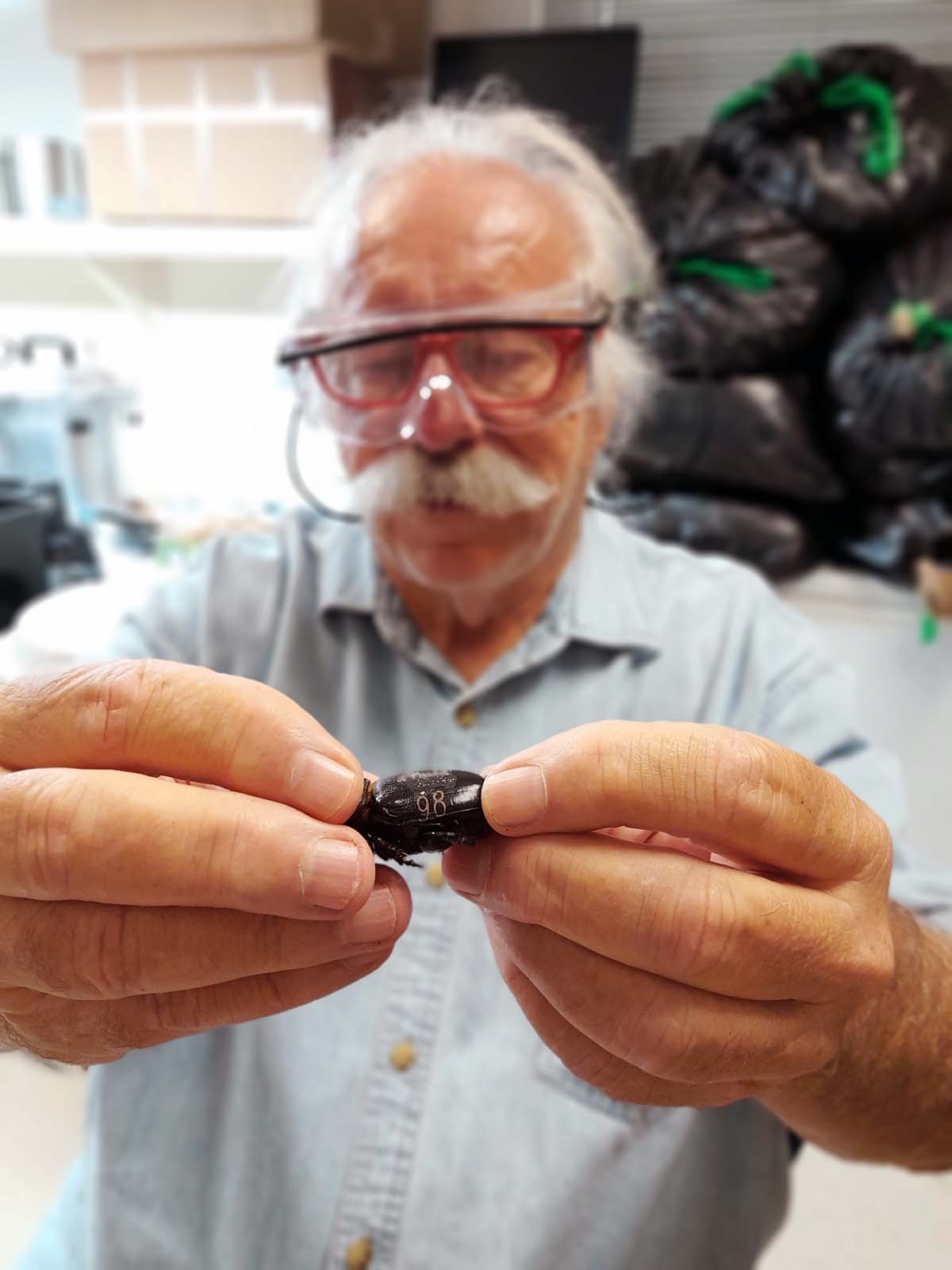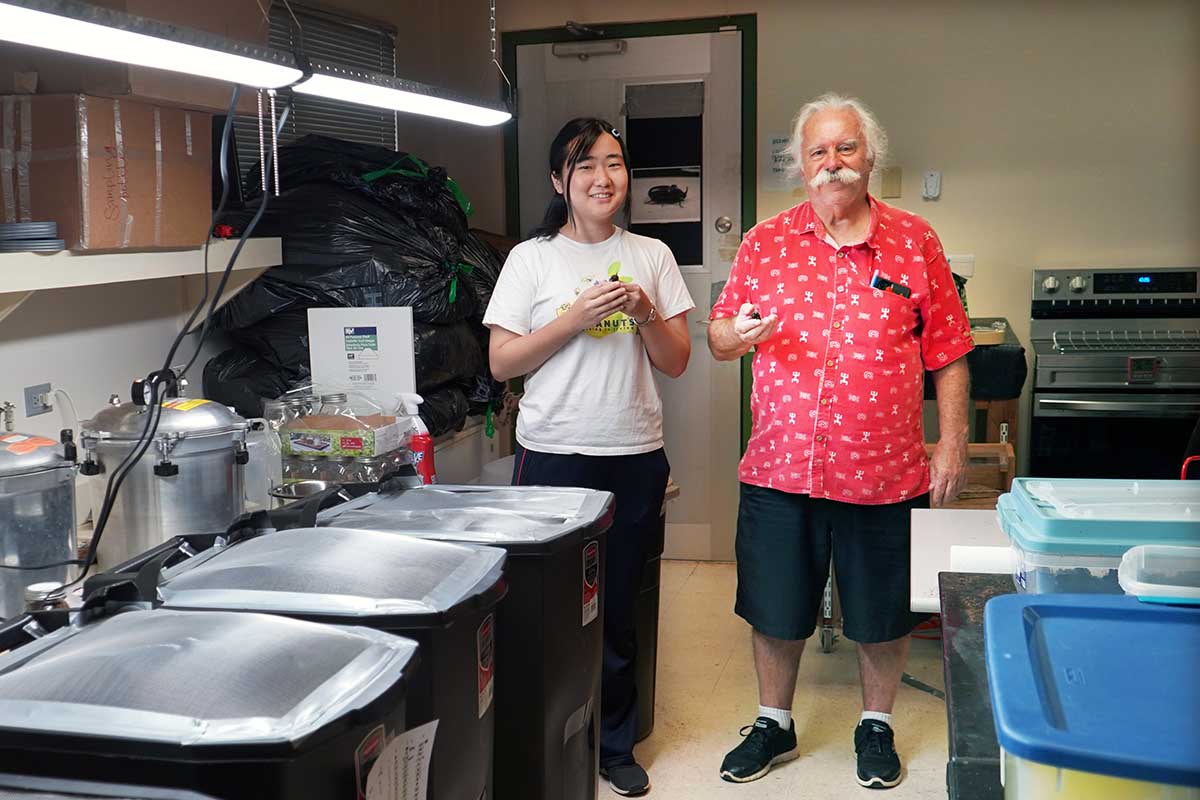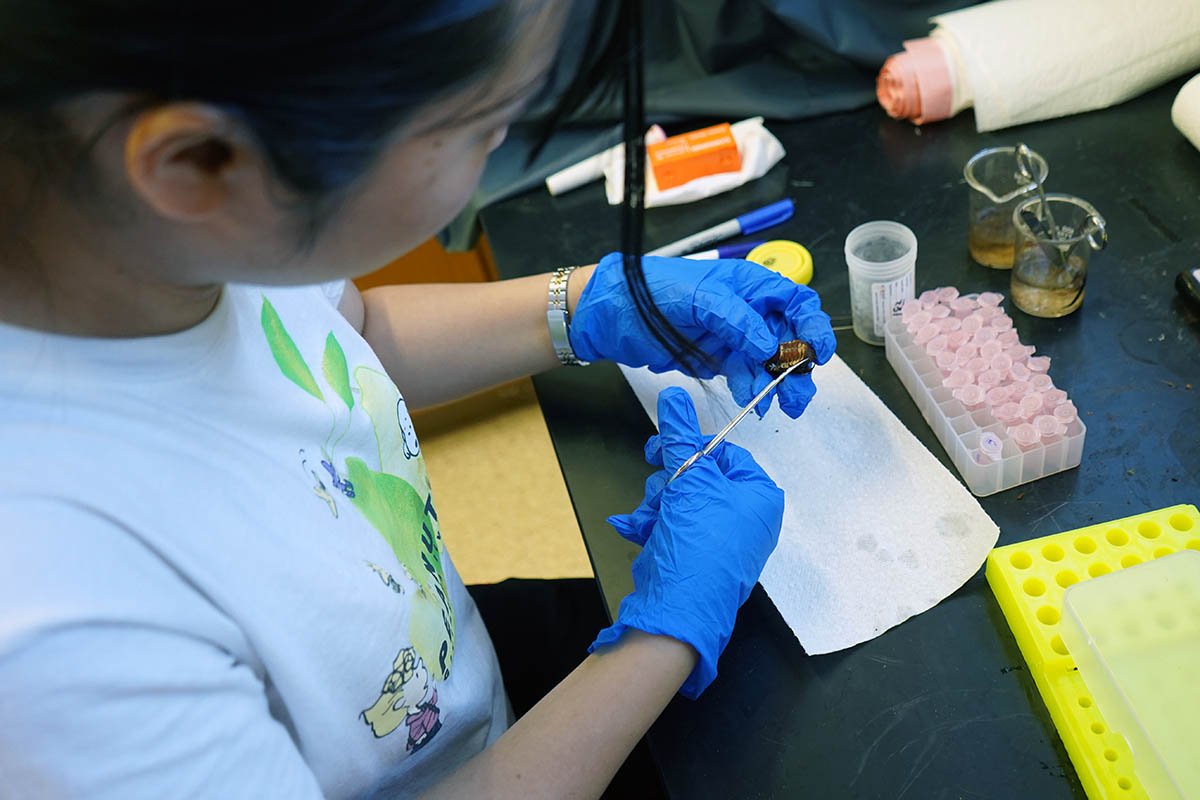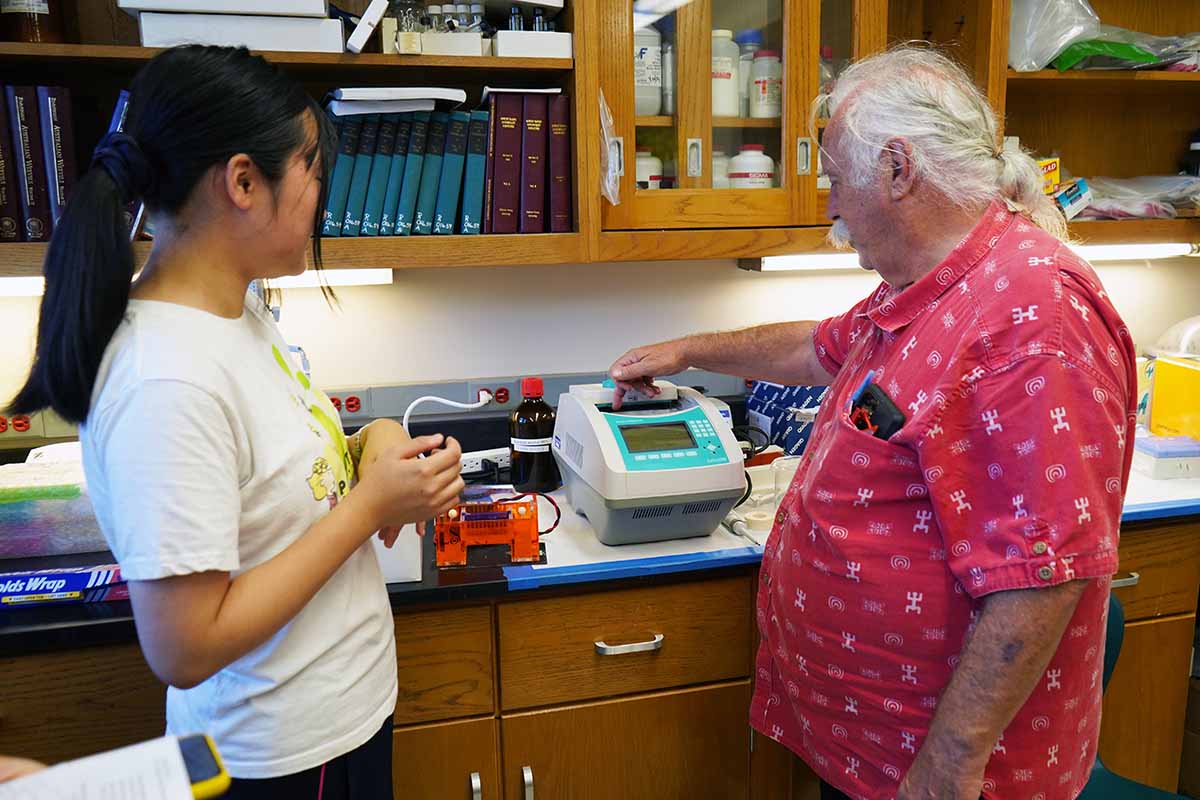UOG, Tokyo University test a rhino beetle virus from Palau on Guam’s beetles
UOG, Tokyo University test a rhino beetle virus from Palau on Guam’s beetles
UOG, Tokyo University test a rhino beetle virus from Palau on Guam’s beetles
5/4/2023
A team of scientists and students from the University of Guam, the Tokyo University of Agriculture & Technology (TUAT), and Palau Community College (PCC) are investigating whether a virus that was introduced to control coconut rhinoceros beetles in Palau can be used to control rhino beetles in Guam.

The rhino beetle virus was released in Guam in 2009 with the expectation that it would have the same effect. Unexpectedly, nothing happened. It was later discovered that the Guam CRB population is genetically different from other CRB populations, and lab tests show that this genotype, referred to as CRB-G, is resistant to the rhino beetle virus.
“We’re trying all kinds of different strains of the virus hoping to find one that matches our beetle,” said Dr. Aubrey Moore, an entomologist with UOG Cooperative Extension & Outreach. “The one we’re testing now is from Palau. It doesn’t seem to kill our beetles, but we’re wondering if there are some sublethal effects. That would be really important. You don’t have to kill an insect to control it. If you can stop it from feeding or flying or reproducing, that will reduce its damage.”
A Pacific-wide effort
Since CRB-G invaded Guam in 2007, it has also invaded Palau, Papua New Guinea, the Solomon Islands, Oahu, and Rota in the Northern Mariana Islands. Outbreaks on these islands are causing major damage to coconut palms and oil palm crops. UOG is part of a Pacific-wide ad-hoc group of researchers — including Palau Community College, University of Hawaii, and universities in Australia, New Zealand, Fiji, and the Solomon Islands — who are actively working to find new isolates of the rhino beetle virus that will infect CRB-G.
Funding from a U.S. Forest Service grant and a Department of the Interior Office of Insular Affairs grant as well as a new student exchange agreement signed this year between the UOG College of Natural & Applied Sciences and TUAT are supporting the current collaborative research at UOG.
The research team consists of Moore, who holds a doctorate in entomology; UOG research associates Christian Cayanan, Laura Caser, Leahmarie Bukurou, and Raimunt Mesubed; Dr. Madoka Nakai, who holds a doctorate in agriculture, and Ph.D. candidate Mayuho Yamauchi from TUAT; and Dr. Christopher Kitalong, who holds a doctorate in biology and serves as vice president of extension at PCC.
Yamauchi is the first exchange student of the CNAS-TUAT partnership. Prior to beginning a Ph.D. program focused on CRB at TUAT this fall, she spent this past March in Guam designing lab experiments with Moore and collecting data. Her adviser, Nakai, is an insect virologist who has been visiting Guam and working with UOG for the past 10 years to find a biological control agent for the CRB population in Guam.
‘No guarantee’

“There’s no guarantee that this Palau strain is the one we’re looking for. We’re hoping it is because the damage in Palau is much, much less than here,” Moore said.
From their initial observations of the beetles over several weeks, the strain didn’t appear to have much effect on their behavior.
The next step is to dissect each beetle to obtain a gut sample that Yamauchi will then test at a lab at TUAT to see which, if any, beetles were infected with the virus. The activity and data records of the infected beetles will be compared with that of the uninfected beetles to see if they behaved differently or died sooner.
Moore said it will most likely be a form of this virus that will be the solution for reducing the CRB-G populations. He said there are about 25 isolates of the virus to be tested or retested, with the next promising candidate being an isolate from the Philippines. Moore expects to begin an experiment with that strain in the coming months.
“This is pure guesswork,” he said, “But I am hoping my lab or somebody else’s lab will find a good biocontrol candidate for CRB-G.”


